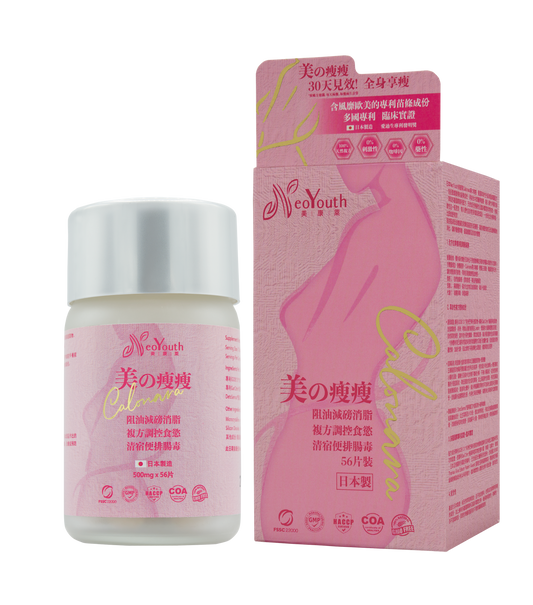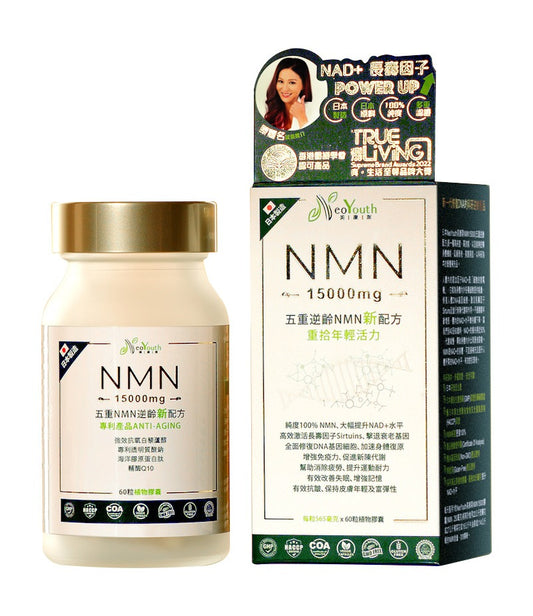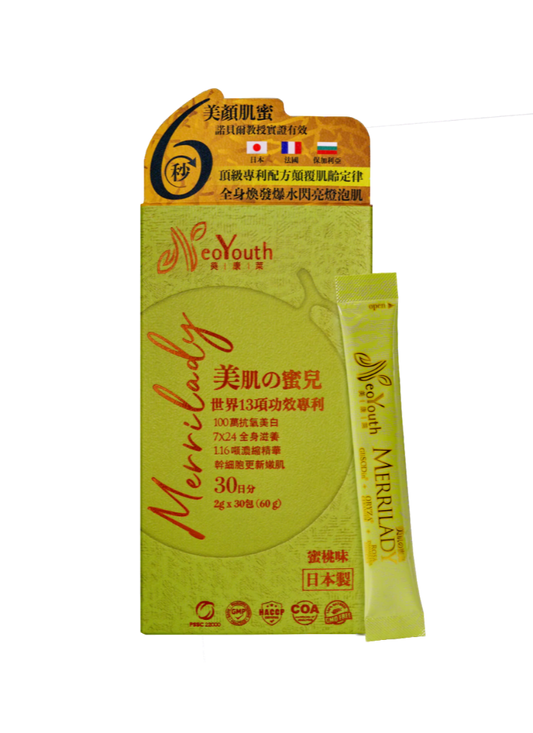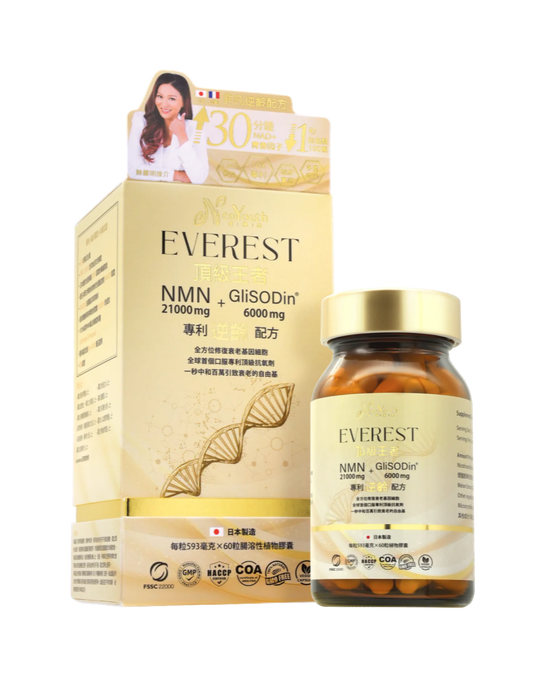Hormonal pigmentation, also known as melasma or chloasma, is a common skin pigmentation disorder. It is primarily caused by skin problems resulting from hormonal changes. These spots typically appear on the face, especially the forehead, upper lip, chin, and cheeks. Below, NeoYouth will introduce methods for preventing hormonal pigmentation from the inside out, as well as effective products for removing it.
Causes of hormonal spots
The main causes of hormonal spots include:
- Hormonal fluctuations: Excessive secretion of hormones, especially in women during pregnancy, menopause, or when using oral contraceptives, can lead to the formation of hormonal spots.
- Prolonged exposure to ultraviolet (UV) radiation: Long-term exposure to UV radiation can exacerbate the formation of hormonal spots because UV radiation stimulates the skin to produce more melanin.
- Genetic factors: People with a family history of hormonal spots are more likely to develop this condition.
- Other factors, such as stress, mood swings, and endocrine disorders, may also lead to the formation of hormonal spots.
Hormonal plaque formation
The formation of hormonal spots involves melanocytes in the skin. When hormone levels change, these cells produce excess melanin, leading to dark spots on the skin. These spots are usually uneven and appear as patches. Prolonged exposure to ultraviolet (UV) radiation can also accelerate this process, making the spots more noticeable.
How to prevent hormone-induced steroid use?
- Sufficient sun protection products are necessary.
Prevention is better than cure. To prevent hormonal spots, sun protection is paramount. To avoid spots caused by ultraviolet rays, you need to apply sunscreen frequently. An effective sunscreen must protect against both UVA (Ultraviolet A) and UVB (Ultraviolet B) rays, have an SPF of at least 30 or higher, and contain physical sunscreen ingredients to maximize its effectiveness. If you dislike the sticky feeling of sunscreen, you can use umbrellas, hats, and long-sleeved clothing instead.
- Use whitening or antioxidant skincare products
Ingredients such as Vitamin C and related derivatives, tranexamic acid, azelaic acid, arbutin, kojic acid, ellagic acid, soybean extract, resveratrol, niacinamide, lignin peroxidase, and botanicals all have anti-UV properties, helping the skin block melanin production. In addition, it's essential to cultivate good whitening and sun protection habits regularly, rather than waiting until pigmentation occurs before taking remedial measures.
- Food-based methods for fading blemishes
Skin pigmentation can be effectively inhibited by absorbing foods containing whitening or antioxidant nutrients, such as vitamins A, C, E, and zinc. These nutrients can be obtained from foods such as tomatoes, carrots, almonds, kiwis, guavas, and nuts. A balanced diet is recommended to supplement your nutrition.
Products for removing hormonal spots
For existing hormonal pigmentation spots, products for treatment can be divided into three main categories: topical products, medical aesthetic treatments, and oral products. Each method has its own characteristics and applicable situations, which are detailed below:
Topical products for removing hormone-induced pigmentation
Topical products are a common method for treating hormonal pigmentation, suitable for mild or early-stage pigmentation problems. Through daily skincare, skin tone can be gradually improved. Products mainly include:
1. Dark Spot Fading Essence
This brightening serum contains various whitening ingredients, such as kojic acid, vitamin C derivatives, and tranexamic acid, which effectively inhibit melanin production and lighten surface dark spots. These ingredients reduce the activity of melanocytes and decrease melanin deposition, thereby improving uneven skin tone. Using this serum morning and night can gradually brighten the skin and make it smoother and more refined.
2. Glycolic acid peel products
Fruit acids (such as glycolic acid and lactic acid) can promote the metabolism of aged keratinocytes and accelerate skin renewal, thereby reducing melanin accumulation. These products are suitable for mild pigmentation problems, but attention should be paid to the concentration and frequency of use to avoid irritating the skin. It is recommended to use them with moisturizing products to avoid dryness or sensitivity caused by fruit acids.
3. Spot-removing cream
Spot-removing creams contain high concentrations of active ingredients (such as azelaic acid or arbutin) and are specifically designed for stubborn pigmentation. These ingredients penetrate deep into the skin to break down and metabolize existing, deep-seated melanin. Spot-removing creams require long-term use, and a formula suitable for your skin type should be chosen under the guidance of a doctor.
4. Sunscreen products
Sunscreen is an essential step in preventing freckles and age spots. Ultraviolet rays can exacerbate melanin production, so choosing a sunscreen with SPF 30 or higher that provides protection against both UVA and UVB rays can effectively prevent the formation of new spots and the darkening of existing ones. If you are outdoors for an extended period, it is recommended to reapply sunscreen every two hours to ensure continuous protection.
Cosmetic procedures
If topical products are not effective in removing hormone-related pigmentation, you can consider medical aesthetic treatments, which are more targeted and efficient for moderate to severe cases of hormone-related pigmentation.
1. Picosecond laser treatment
Pico lasers use high-energy, short-pulse lasers to shatter melanin, which is then eliminated from the body through metabolism. This technology is particularly effective for deep hormonal pigmentation and has relatively few side effects, but multiple treatments are required to achieve the desired results. Furthermore, strict sun protection is necessary after treatment to prevent post-treatment hyperpigmentation.
2. Intense Pulsed Light (IPL) Therapy
Intense pulsed light (IPL) therapy uses photothermal effects to heat deep skin tissue, effectively breaking down melanin clusters and promoting collagen production. This method is suitable for treating superficial hormonal pigmentation, but multiple treatments are usually required to see results, and slight scabbing or peeling may occur.
3. Chemical peels
Chemical peels use chemical solutions such as glycolic acid, salicylic acid, or trichloroacetic acid to remove surface-layered, aged skin cells and accelerate the generation of new cells. Chemical peels can significantly improve skin texture and lighten dark spots, but they must be performed by a professional doctor to avoid the risks of hyperpigmentation or infection caused by overly deep peels.
Oral products for removing hormonal pigmentation
Oral products regulate bodily functions from within, which is an important way to improve pigmentation caused by hormonal imbalances, improving the skin from the inside out.
1. Skin whitening supplements
Supplements containing antioxidants such as vitamins C and E, and glutathione, help reduce free radical damage to skin cells and inhibit melanin production. These supplements are suitable for long-term use and can gradually brighten the skin and improve overall skin health.
2. Hormone-regulating supplements
Hormonal fluctuations are a major cause of hormonal pigmentation. Therefore, targeted supplementation with nutrients that regulate hormone balance (such as phytoestrogens or specific amino acids) can effectively alleviate pigmentation caused by endocrine disorders. However, such supplements should be taken under the guidance of a doctor to ensure safety and effectiveness.
3. Tranexamic acid oral preparations
Tranexamic acid is a common ingredient in skin whitening treatments. It inhibits tyrosinase activity and reduces melanin production. It also has anti-inflammatory properties, reducing skin inflammation caused by ultraviolet radiation. However, tranexamic acid should be used with a prescription from a qualified doctor to avoid unnecessary side effects.
4. NMN supplements
NMN (β-nicotinamide mononucleotide) is a highly regarded anti-aging nutritional supplement in recent years. It can enhance cell vitality and promote metabolism, helping to improve dull and uneven skin tone. Long-term use can also improve overall health, resulting in younger-looking and radiant skin. Unlike some oral products for treating hormonal pigmentation, NMN supplements are very safe and can be taken without a doctor's prescription or guidance.
Before using any product to treat hormonal pigmentation, you should follow professional advice and be aware that individual differences may lead to varying results. Meanwhile, consistent sun protection and a balanced diet are also essential measures for preventing and improving hormonal pigmentation.
Made in Japan, 100% pure NMN anti-aging formula
If you are troubled by hormonal pigmentation or have tried various pigmentation-removing products without success, you might consider NeoYouth Merrilady, a Japanese skin-beautifying product with a triple-competitive skin-beautifying formula. This product holds 13 global patents and incorporates three top-tier national scientific formulas. Clinically proven, it provides 24-hour continuous and highly effective nourishing and repair, continuously improving skin's hydration, radiance, anti-inflammation, and antioxidant capabilities. It significantly improves hormonal pigmentation caused by hormonal imbalances and prolonged exposure to UV rays.
NeoYouth Merrilady from Japan contains Bulgarian Damask rose stem cell extract, rich in nutrients and active essences, which have excellent protective effects on skin cells, promote epidermal cell regeneration, improve the skin's ability to resist ultraviolet rays, and have anti-inflammatory effects, helping to improve problems such as hormonal spots, yellowing, dullness, and roughness of the skin.
Hormonal pigmentation, a common skin problem, is primarily caused by changes in hormone levels within the body. Prevention and treatment require a comprehensive approach, including using appropriate skin-care products to address hormone-related pigmentation, avoiding excessive sun exposure, and seeking professional medical help when necessary. These methods, combined with nutritional supplements, can effectively inhibit the formation of hormone-related pigmentation and improve its condition.





